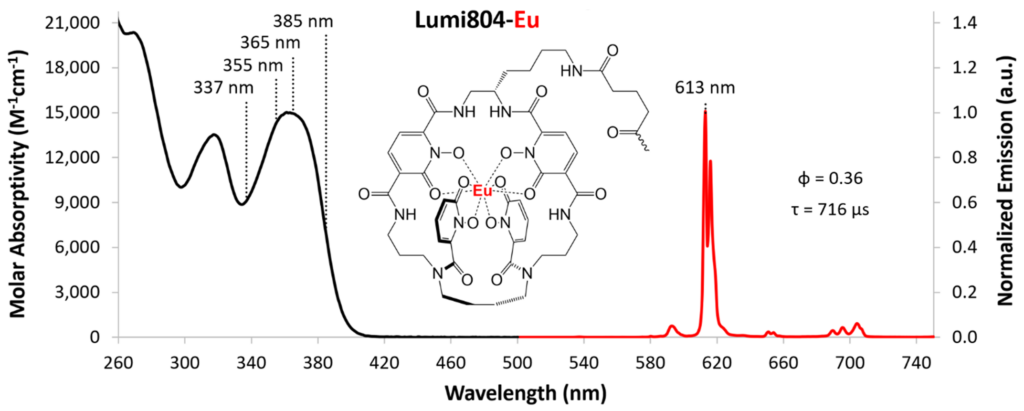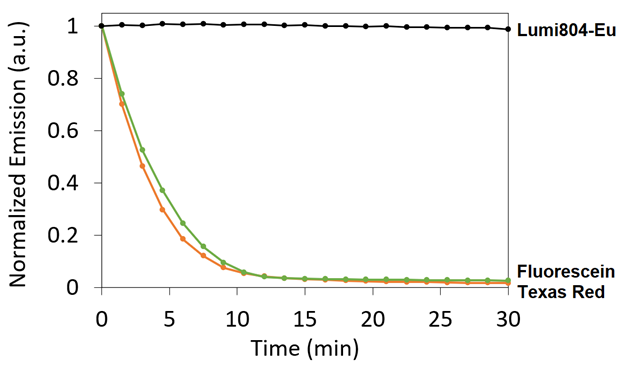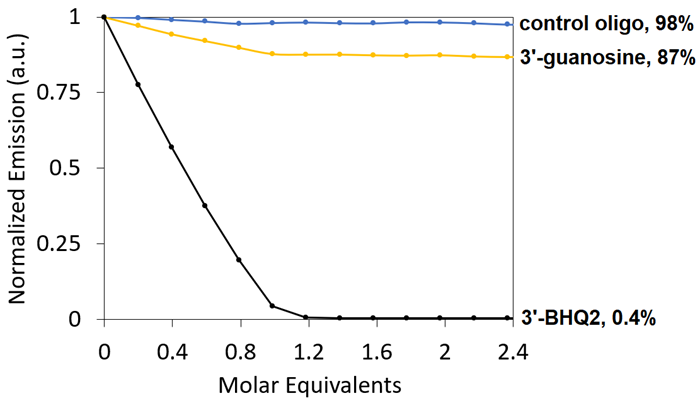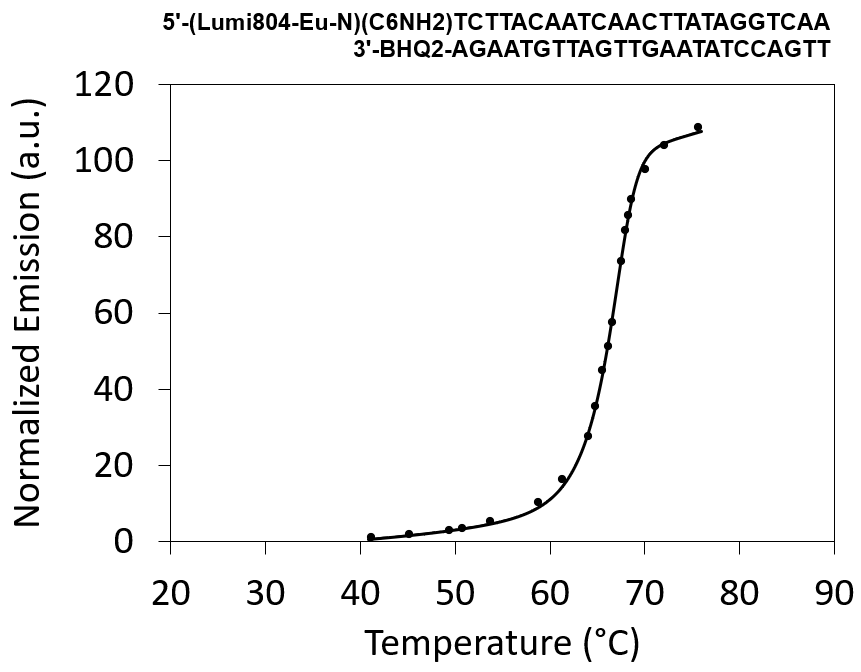Background
Lanthanides are photoluminescent metals that are characterized by very sharp and narrow emission bands and very long emission lifetimes arising from 4f orbital transitions. These long lifetimes can be used to essentially eliminate background fluorescence by using time-resolved spectroscopy since lifetimes of fluorophores and fluorescent compounds are on the nanosecond time scales where lanthanides are on the millisecond time scales. Since the intrinsic absorptivity of lanthanides is very low, the key to increasing the brightness and stability of luminescent lanthanides are the chelating ligands which absorb the light and excite the lanthanide through energy transfer.
A Major Advance
The breakthrough came from Lumiphore which developed and patented a novel macrocyclic chelator, Lumi804. When Lumi804 is loaded with the Eu3+, which is arguably the brightest of the lanthanides, it yields an extremely bright and stable luminescent label with a narrow emission band centered at 613 nm, a high quantum yield of fluorescence (Phi) and an emission lifetime (Tau) of 716 ms (Fig. 1).

Being a luminescent metal rather than an organic dye, Lumi804-Eu exhibits remarkable chemical stability. Shown in Fig. 2 is a plot of the normalized emission of two popular fluorophores, Texas Red and fluorescein subjected to exposure to ozone over a 30-minute period. After 15 minutes, there was essentially no emission from either organic dye whereas Lumi804-Eu showed no decrease.

Interestingly, the Lumi804-Eu can be quenched by BHQ-2 just like an organic dye. An oligonucleotide was synthesized and labeled with Lumi804-Eu on the 5’ terminus along with its reverse complement (control), the reverse complement appending a 3’-dG (3’guanosine) and the reverse complement with a 3’-BHQ-2 (3’BHQ2):


When the quenching efficiency was calculated, it was 99.4%. With an adjacent dG, the quenching was 13% which is significantly less than seen with fluorescein (25 to 40%)[1]. This quenching is also reflected in the melting curve for the duplex:

Summary:
The photoluminescent Lumi804-Eu is a bright, photo- and chemically-stable lanthanide probe with a narrow emission centered at 613 nm. It can be used as a standard fluorophore; however, it truly shines when its long emission lifetime is taken advantage of in Time-Resolved FRET assays. By doing so, ultra-low background assays can be achieved by eliminating the background signal from the acceptor dyes and sample autofluorescence, as well as increasing throughput by eliminating wash steps. Many Time-Resolved FRET instruments are commercially available (see link) to suit your needs.
Key Advantages of Lumi804-Eu:
- Bright emission at 613 nm
- >200 nm Stokes shift
- Efficiently quenched by BHQ-2 (>99%)
- Broad excitation (300 to 390 nm)
- High Quantum Yield of Fluorescence (0.36)
- pH-independent emission (pH 2-12)
- Photostable
- Chemically stable
Applications:
- Time-resolved Förster resonance energy transfer (TR-FRET) tests and assays
- Multiplexed assays
- High-throughput screening
- Detection in complex biological matrices
- Can be used as a conventional fluorophore
Reference:
[1] Fluorescein-Labeled Oligonucleotides for Real-Time PCR: Using the Inherent Quenching of Deoxyguanosine Nucleotides, Anal. Biochem., 209(1), 89-97 2001
***Lumi804-Eu is protected by US patents 10,239,878 and 11,951,188 and related international patents issued and pending.
